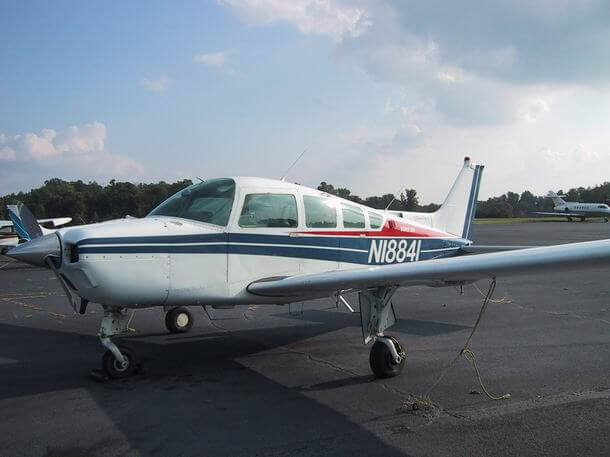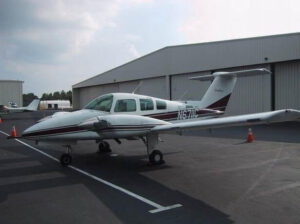Flight Training
You have been dreaming about it since you were little. The exhilarating sensation of flight. You’ve gazed into the sky and watched planes whisk their passengers to far away lands. You’ve read about Lindbergh and seen The Right Stuff. You’ve always dreamed of flying. But you thought it would take too much time, or that is was too expensive. Maybe you thought only daredevils became pilots. But learning to fly is easy, affordable, accessible, and most importantly SAFE and FUN!
It’s so simple…
Learning to fly is easier than people think. You don’t have to become a commercial or military pilot to fly. You can be part of general aviation. Today there are thousands of people just like you learning to fly. They come from all walks of life and have a variety of reasons for wanting to be a pilot. Some fly to expand business opportunities. Others to explore careers in aviation. Some are looking for an activity they can share with the family. Most fly for the sheer fun of it. Whatever your reason, there are just a few basic requirements you will have to meet in order to fly solo.
You must…
- Be at least 16 years old
- Speak English
- Pass a basic medical exam
That’s it. If you meet these requirements you can fly. (You can actually fly at any age, but you must be 16 to solo) You don’t have to be John Glenn or Chuck Yeager. Just a regular guy. In fact, you don’t have to be a guy at all. Female pilots have been around since the Wright Brothers and are one of the fasted growing segments of the pilot population.
Safety First
Now, lets address the issue of safety. More so than anything else, safety comes first in the general aviation industry. In fact, safety is the foundation of flight training. Today’s training aircraft are engineered and built to rigid federal standards and are constantly checked to make sure they are in ship shape. Innovations in weather tracking radar and radio communications combined with the most sophisticated and safest airspace system, make today’s general aviation aircraft one of the safest vehicles every invented.
Prepare for take off
Once you’ve made your decision, it’s time to begin training. Pilot training consists of both ground and flight courses which cover flight rules and regulations, flight planning, navigation, radio procedures, and weather. In order to receive your “ticket”, you must pass the Federal Aviation Administration written exam (rules and regulations) and then the fun part- the flying exam. As a pilot, you choose the level of involvement you want. The more you take on, the more stringent the FAA requirements. From a recreational pilot certification to an air transport pilot certificate. It’s up to you.
Fly now, buy later
The best part is you don’t even have to own an airplane. Instead, you can rent an airplane much like you would rent a car, or join a “flying club” in your area and share the ownership. Costs to obtain a pilot license vary depending on the area of the country you fly in and the amount of time you devote.
You’re in control
Imagine flying to a nearby community for breakfast or lunch. Or taking your friends or family on a weekend getaway, traveling at more than twice the speed of a car. Flying is fun! You decide where you’re going and when you want to arrive and when you want to return. And there are more than 5300 airports across the country in communities just like yours…. just waiting for your arrival.
Getting off the ground
Like the philosopher said, “A journey of a thousand miles begins with a first step” and your first step is to get into an airplane and see for yourself. Check out www.beapilot.com for even more information about flying. Then give us a call at Quality Aviation.
See you in the sky!
Certificates
Quality Aviation offers certificate courses for pilots of all experiences levels
Private pilot certificate
A private pilot certificate is much like your driver’s license. It allows you to fly a single engine propeller driven airplane and carry passengers and baggage, although not for compensation or hire. You are restricted VFR (Visual Flight Rules) conditions.
Commercial pilot certificate
This certificate is identical to your Private Pilot Certificate except it allows you to fly an airplane and carry passengers and/or cargo for compensation or hire. Your Commercial Pilot Certificate will be identical to your Private Pilot Certificate except it will indicate “commercial pilot” rather than “private pilot”.
Instrument rating
An instrument rating is added to your Private or Commercial Pilot Certificate it will have the words “instrument-airplane” typed on the certificate under the ratings section. An instrument rating permits you to fly in IFR (Instrument Flight Rules) conditions “by instruments”. You will be able to fly through clouds, rain, fog, and conditions which obscure visual landmarks and navigation points making it impossible to fly VFR. Typically, a pilot will encounter some type of “bad” weather when flying trips of several hundred miles or trips lasting over a period days. Your instrument rating gives you more flexibility as to when and where you can fly.
Multi-Engine (ME) Certificate
This certificate certifies you to operate a multi-engine aircraft and is added to your Private or Commercial certificate. The focus of course teaches you multi-engine aerodynamics, operating procedures, systems, and performance considerations. In addition, principles, which apply to flying a multi-engine aircraft with one engine inoperative, will also be learned. If you hold an Instrument rating, you will also learn approaches and engine out situations in IFR conditions.
Certified Flight Instructor (CFI)
Quality Aviation offers the following courses for those interested in becoming a CFI:
- CFI Certified Flight Instructor Single Engine Certificate
- CFII Certified Flight Instructor Single Engine Instrument Certificate
- CFI/MEI- Certified Flight Instructor Multi-Engine Instrument

Training Aircraft
We have standardized on Beechcraft airplanes as the school training aircraft. These aircraft are low-wing, all metal 4-seat planes with a proven history of reliability, durability, and safety.
Single Engine Training
 Sundowner – A perfect aircraft to earn your Private or Commercial Pilot certificates in. The school has two of these aircraft. Both are equipped with 180hp engines, have fixed landing gear, and fly at 120 mph (105 knots). One of the two Sundowners is certified for aerobatics maneuvers.
Sundowner – A perfect aircraft to earn your Private or Commercial Pilot certificates in. The school has two of these aircraft. Both are equipped with 180hp engines, have fixed landing gear, and fly at 120 mph (105 knots). One of the two Sundowners is certified for aerobatics maneuvers.
 Sierra – The Sierra provides an excellent entry level high performance, complex airplane. Equipped with a 200hp engine capable of 145mph (125 knots) and retractable landing gear, the Sierra is a favorite of CFI and CFII students.
Sierra – The Sierra provides an excellent entry level high performance, complex airplane. Equipped with a 200hp engine capable of 145mph (125 knots) and retractable landing gear, the Sierra is a favorite of CFI and CFII students.Multi Engine Training
 Duchess – At the Private or Commercial level, we teach multi-engine flying in the Beechcraft Duchess, a low wing, all metal 4-seat airplane with retractable landing gear. It is equipped with two counter-rotating 180hp engines capable of 170mph (145kts). This is an excellent airplane in which to learn multi-engine skills.
Duchess – At the Private or Commercial level, we teach multi-engine flying in the Beechcraft Duchess, a low wing, all metal 4-seat airplane with retractable landing gear. It is equipped with two counter-rotating 180hp engines capable of 170mph (145kts). This is an excellent airplane in which to learn multi-engine skills.
* All training aircraft listed are also available for charter by individual pilots.
